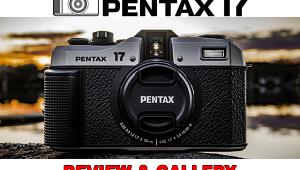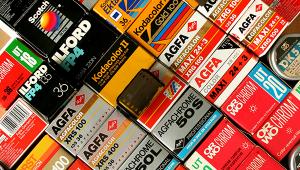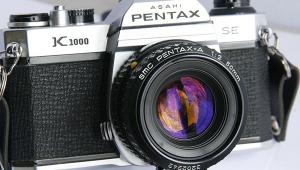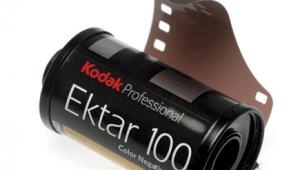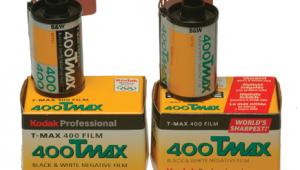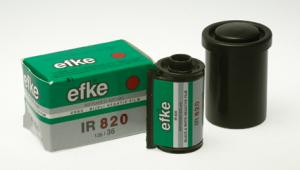Shutterbug’s Exclusive photokina Coverage; Film, Chemicals, Paper, Darkroom, And More: Not Quite Dead Yet Page 2
Chemicals And Paper
Moersch Photochemie chemicals for black and white have long been popular in Europe, but hard to find in the US. Now, they will be available from Freestyle. Dr. Moersch is a German chemist with a passion for photography which becomes evident as soon as you talk to him; I am looking forward to trying some of his products.
When it comes to paper, the news is even better. A German consortium has bought two Agfa coating lines, one film, one paper; disassembled them; and reassembled them in new premises in Leverkusen, Agfa’s former headquarter city. They hope to do contract coating for several people, but one of the most important will be FotoImpex, who have plans to introduce the equivalents—they say, the exact equals—of several of the old Agfa products, albeit under the Adox label. As Mirko at FotoImpex explained, “We don’t want to license the Agfa name, because it’s only available for five years, and then who knows what will happen? I’m young; I want to be still selling Adox paper in 50 years.”
Something else he said, which made me shiver, is that he and the consortium are retaining a color engineer, not to coat color films, but to keep up-to-date with color film technology. “That way,” he said, “even if everyone else stops, we shall still know how—and we shall start to make color films.” Darkness shall not fall…
New papers from Foma made my hands itch to get out my Marshall’s Oils. One, which looked ideal for handcoloring, was Fomabrom Variant IV 123, a baryta (fiber-based) paper with a creamy base tone and according to the spec sheet can be varied from extra soft (Grade 000) to Grade 5. The image tone is neutral to warm depending on the developer you choose, and they call the finish “semimatte.”
Admittedly “semimatte” is something of a flexible term, and there are lots of papers with semimatte finishes, but Foma also offers a “semiglossy” finish with quite a different feel. The paper is called Fomabrom Variant 113 semiglossy velvet. It is variable contrast, fiber-based, and looks like it should accept handcoloring beautifully. As soon as I’ve finished these reports…
As ever, I spent half an hour with Guy Gerard from Bergger. Although he has no new products, he’s still hanging in there—“Which is news in itself,” said M. Gerard—and he continues to provide high quality and sometimes unique photographic papers. Like the others who are still selling paper, he’s in it for the long haul and does not rule out new papers in the future, though probably not until the current financial shenanigans are over in the world economy.
As well as “the long haul,” another recurring theme among manufacturers and distributors of film, paper, chemistry, and darkroom is that the student market is contributing a great deal toward keeping the darkroom alive. Schools and colleges continue to teach traditional darkroom skills. Over the last five or 10 years, quite a lot of schools ripped out the wet darkrooms to go digital. Often, within a year or two, they have put the traditional wet darkrooms back—and it‘s still happening, with orders for 10 enlargers at a time.
Partly it’s tutor demand, because there’s no better way to teach the basics than via a medium where there are no “delete” and “reset” buttons, but to a very large extent it is also a matter of student demand. A lot of young people say that they spend all day in front of a computer screen, so when it comes to photography they like to do something different. Also, of course, digital is what they’ve grown up with, and most young people just love to rebel against the status quo: I am sure we all remember our own younger days.
Darkroom Equipment
Everybody interested in darkroom hears stories about people who want to give away their old equipment. But what if you want to have a sparkling new darkroom with all new accessories? (If, for example, you are a school…) Paterson still had their developing tanks, graduates, tongs, and plastic trays and I have already mentioned the stainless developing tanks from Tiltall (BKA).
They are far from the only ones, though. One of my favorite stands at photokina is shared by Kienzle Enlargers, Heiland Electronics, and Moersch Photochemie. Dr. Kienzle, Juergen Heiland, and Dr. Moersch are all enthusiasts. They are always willing to talk shop, but they are also enthusiastic citizens of the world who are willing to spend time talking about life, the universe, and everything. Enthusiasts like these are the people who make photokina fun.
Kienzle has a new LED split-grade light source for variable contrast printing. Blue and green LEDs for exposure, and red for focusing, provide “cold” light and use much less power than tungsten-halogen light sources. These heads are available for Kienzle enlargers and for some Leitz and Agfa models: if your old Leitz Focomat or Valoy II enlarger needs other spare parts contact Dr. Kienzle about these, too. For archival washing, Kienzle showed new Plexiglas print washers for paper sizes from 30x40cm (12x16”) up to 80x110cm (30x40”).
Heiland Electronics has a prototype LED light source to replace the hard-to-find and expensive bulbs for the Kaiser Duka Sodium Vapor Safelight. I heard from Kaiser that they were considering dropping the Duka Lights because of the difficulty with finding replacement bulbs, but in view of Herr Heiland’s new development, who knows? I know that Kaiser and Heiland will be talking to each other.
I have already mentioned that Freestyle will be bringing in Moersch chemicals, but apparently they are also talking to Kienzle and Heiland. Watch for further developments. In the meantime both of the latter companies are happy to deal directly with customers.
All in all, this year’s photokina had a surprising amount for the lover of the traditional wet darkroom: new film, new chemicals, new paper, and new hardware. And, it seemed to me, a new enthusiasm. The Dark Side will never be what it was, but equally, it refuses to go away.
- Log in or register to post comments

